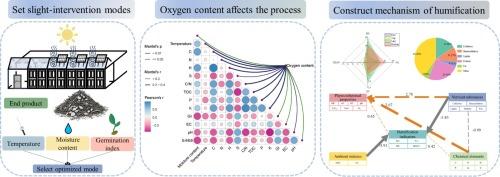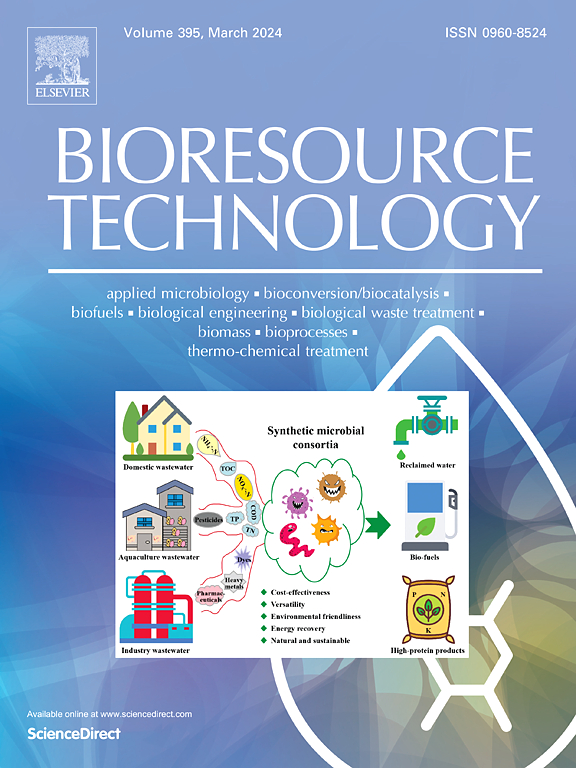揭示干预策略和氧气差异对生活垃圾堆肥过程中腐殖化的影响。
IF 9.7
1区 环境科学与生态学
Q1 AGRICULTURAL ENGINEERING
引用次数: 0
摘要
本研究构建了三种不同的光伏辅助堆肥系统来处理农村生活垃圾,并探索了堆肥梯度高度氧差异条件下生物大分子与其他因素的相互作用途径。定期翻堆和通风脱水的优化模式显著降低了 53.6% 的水分含量,提高了 35.6% 的种子发芽指数。优化模式下不同高度的含氧量对堆肥的理化性质有明显影响,中间部分的纤维素、半纤维素和蛋白质降解量高于其他部分。结构方程模型表明,底部的理化性质受到生物大分子的影响,这可能与低氧条件下产生的挥发性脂肪酸(VFAs)有关。研究结果表明,采用人工翻堆和通风脱水作为优化工艺可以促进堆肥成熟,氧气浓度对堆肥的腐殖化过程有重要影响。本文章由计算机程序翻译,如有差异,请以英文原文为准。

Unraveling the impact of intervention strategies and oxygen disparity in humification during domestic waste composting
This study constructs three different photovoltaic assisted composting systems to treat rural domestic waste, and explores the interaction pathways between biomacromolecules and other factors under oxygen disparity at gradient heights of the compost. The optimized mode of regular turning and ventilation-dehydration significantly reduced the moisture content by 53.6% and increased the seed germination index by 35.6%. The oxygen content at different heights under the optimized mode significantly affects the physicochemical properties of the compost, and the degradation of cellulose, hemicellulose, and protein in the middle is higher than other parts. The structural equation model shows that the physicochemical properties at the bottom are affected by biomacromolecules, which may be related to volatile fatty acids(VFAs) produced under low oxygen conditions.The research results show that using manual turning and ventilation-dehydration as the optimized process can promote compost maturity, and oxygen concentration has an important impact on the humification process of the compost.
求助全文
通过发布文献求助,成功后即可免费获取论文全文。
去求助
来源期刊

Bioresource Technology
工程技术-能源与燃料
CiteScore
20.80
自引率
19.30%
发文量
2013
审稿时长
12 days
期刊介绍:
Bioresource Technology publishes original articles, review articles, case studies, and short communications covering the fundamentals, applications, and management of bioresource technology. The journal seeks to advance and disseminate knowledge across various areas related to biomass, biological waste treatment, bioenergy, biotransformations, bioresource systems analysis, and associated conversion or production technologies.
Topics include:
• Biofuels: liquid and gaseous biofuels production, modeling and economics
• Bioprocesses and bioproducts: biocatalysis and fermentations
• Biomass and feedstocks utilization: bioconversion of agro-industrial residues
• Environmental protection: biological waste treatment
• Thermochemical conversion of biomass: combustion, pyrolysis, gasification, catalysis.
 求助内容:
求助内容: 应助结果提醒方式:
应助结果提醒方式:


